
The Elisabeth-Anna-Palais is a secular red-brick building in Oldenburg, Lower Saxony, Germany, located at the northeast of the Schlossgarten Oldenburg, close to the Schloss Oldenburg. [1]

The Elisabeth-Anna-Palais is a secular red-brick building in Oldenburg, Lower Saxony, Germany, located at the northeast of the Schlossgarten Oldenburg, close to the Schloss Oldenburg. [1]
Usually the ducal family resided in Schloss Oldenburg, but Frederick Augustus (from 1900 the last ruling grand duke of Oldenburg) decided to build this as their new home, on a site now between the Schloss and the Augusteum. It was built between 1894 and 1896 to plans by the duke's chief architect Ludwig Freese. Its design imitates Baroque architecture and its southeastern corner (today its left-hand entrance) has an onion-dome-topped tower. During construction Frederick Augustus's wife Princess Elisabeth Anna of Prussia (1857–95) died, and the new building was named in her memory. On 24 October 1896, Frederick Augustus moved into the new residence with his family and his second wife Duchess Elisabeth Alexandrine of Mecklenburg-Schwerin (born 1869, daughter of Frederick Francis II, Grand Duke of Mecklenburg-Schwerin).
However, revolutionaries forced the Grand Duke to raise the red flag from the flagpoles of the Palais and the Schloss on 8 November 1918 and three days later he renounced his dukedom and retired to his Schloss Rastede at Rastede. After his resignation, the Palais was used for other purposes. The kitchen wing to the east of the main building was demolished in the early 1960s to make room for the new "Schlosswall" street, though the Palais was now sited right on this new road and thus gained a new entrance. The Palais now houses the Sozialgericht Oldenburg.
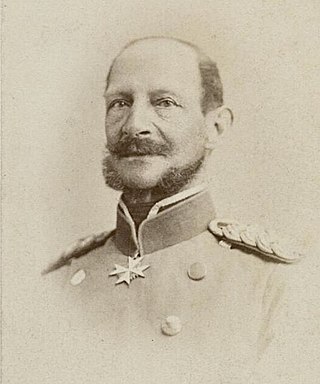
Prince Frederick Henry Albert of Prussia was the fifth son and youngest child of King Frederick William III of Prussia and Louise of Mecklenburg-Strelitz. His parents had fled to East Prussia after the occupation of Berlin by Napoleon, and Albert was born in Königsberg. Two of Albert's elder brothers were Frederick William IV, King of Prussia from 1840 till 1861, and William I, King of Prussia from 1861 to 1888 and German Emperor from 1871 until 1888.
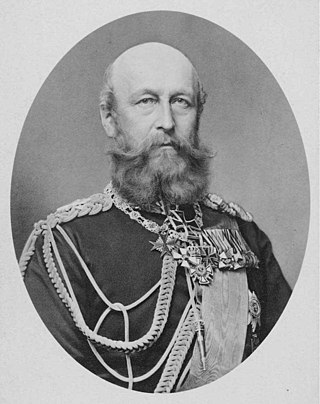
Frederick Francis II was a Prussian officer and Grand Duke of Mecklenburg-Schwerin from 7 March 1842 until 15 April 1883.

Frederick Francis III was the penultimate Grand Duke of Mecklenburg-Schwerin.
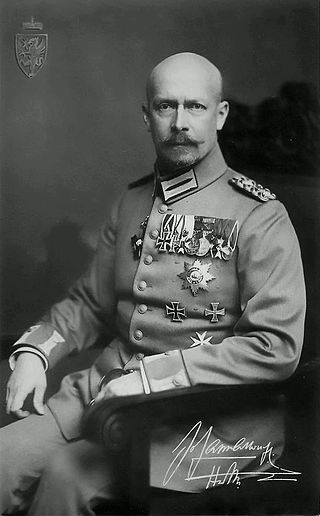
Duke John Albert of Mecklenburg was a member of the House of Mecklenburg-Schwerin who served as the regent of two states of the German Empire. He was first regent of the Grand Duchy of Mecklenburg-Schwerin from 1897 to 1901 for his nephew Frederick Francis IV, Grand Duke of Mecklenburg, and thereafter regent of the Duchy of Brunswick from 1907 to 1913.

Adolphus Frederick V was reigning grand duke of Mecklenburg-Strelitz from 1904 to 1914.
Anton-Günther, Duke of Oldenburg was the head of the Grand Ducal Family of Oldenburg.
Friedrich Franz, Hereditary Grand Duke of Mecklenburg-Schwerin was the heir apparent to the throne of Mecklenburg-Schwerin and a member of the Waffen-SS.
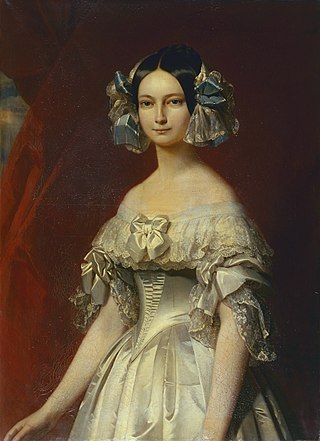
Duchess Helene of Mecklenburg-Schwerin was a French Crown Princess after her marriage in 1837 to the eldest son of Louis Philippe I. She is known as the mother of the future Count of Paris and Duke of Chartres.
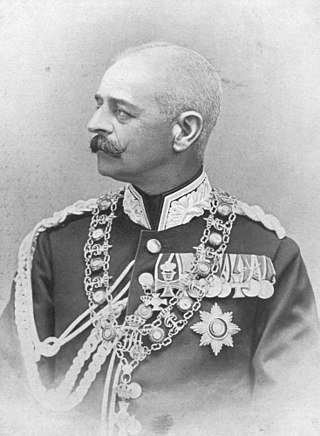
Frederick Augustus II was the last ruling Grand Duke of Oldenburg. He married Princess Elisabeth Anna of Prussia, daughter of Princess Maria Anna of Anhalt-Dessau and Prince Frederick Charles of Prussia. After her death, he married Elisabeth Alexandrine of Mecklenburg-Schwerin.

Princess Elisabeth of Prussia was a German princess. She was the second child of Prince Frederick Charles of Prussia and Princess Maria Anna of Anhalt-Dessau. The Elisabeth-Anna-Palais was named in her honor after her early death in 1895.

Schloss Oldenburg is a schloss, or palace, in the city of Oldenburg in the present-day state of Lower Saxony, Germany. The first castle on the site was built around 1100 and became the ancestral home of the House of Oldenburg. The present building served as residence to the counts (1667–1785), dukes (1785–1815) and grand dukes (1815–1918) of Oldenburg.

Rastede Palace is a country estate at Rastede near Oldenburg, Germany. The town of Rastede is about 12km north of Oldenburg.

Princess Marie of Schwarzburg-Rudolstadt was the consort and third wife of Frederick Francis II, Grand Duke of Mecklenburg-Schwerin. She was mother of Prince Hendrik, consort of Queen Wilhelmina of the Netherlands and father of Queen Juliana.

Duchess Elisabeth of Mecklenburg-Schwerin was a daughter of Frederick Francis II, Grand Duke of Mecklenburg by his third wife Princess Marie of Schwarzburg-Rudolstadt. By her marriage to Frederick Augustus II, she became the consort of the last reigning Grand Duke of Oldenburg.
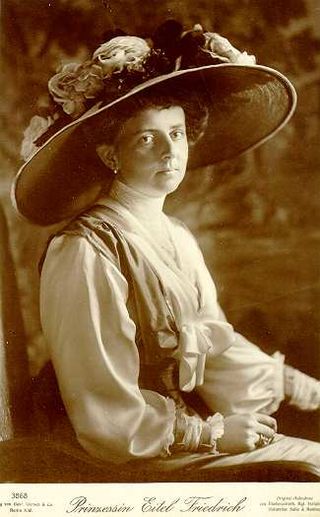
Duchess Sophia Charlotte of Oldenburg was a member of the House of Holstein-Gottorp. She was the only surviving child of Frederick Augustus II, Grand Duke of Oldenburg by his first wife Princess Elisabeth Anna of Prussia.
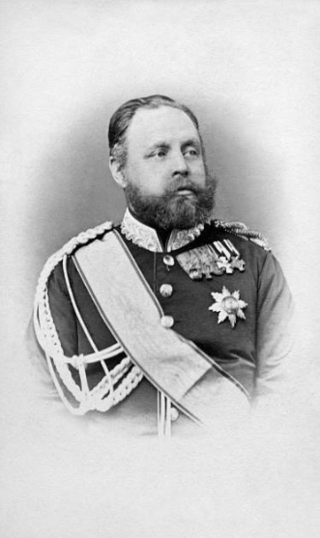
Peter II was the reigning Grand Duke of Oldenburg from 1853 to 1900. He claimed hereditary parts of Duchy of Holstein after the Second Schleswig War in 1864. After signing a treaty on 23 February 1867 in Kiel, he renounced his claims. In return, he received the district of Ahrensbök, the Prussian parts of the former Principality of Lübeck other than the village of Travenhorst, and was given a million taler as compensation from Prussia. Thus the Grand Duchy of Oldenburg gained access to the Baltic Sea.

Nikolaus, Hereditary Grand Duke of Oldenburg was the eldest son of Frederick Augustus II, Grand Duke of Oldenburg, who was the last ruling Grand Duke of Oldenburg.
Ameli, Princess of Löwenstein-Wertheim-Freudenberg was the daughter of Udo, Prince of Löwenstein-Wertheim-Freudenberg, and widow of Anton-Günther, Duke of Oldenburg, the late pretender to the Grand Duchy of Oldenburg who died on September 20, 2014.
Duke Friedrich August of Oldenburg was a member of the House of Holstein-Gottorp. He is a son of Nikolaus, Hereditary Grand Duke of Oldenburg and Princess Helena of Waldeck and Pyrmont.

The Augusteum is a German art museum in the city of Oldenburg, Lower Saxony. The museum houses the old master painting collection of the State Museum for Art and Cultural History.